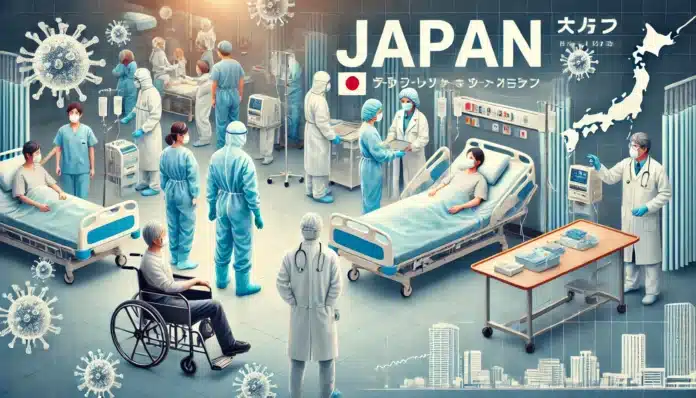Japan is currently facing a worrying surge in cases of Streptococcal Toxic Shock Syndrome (STSS), a severe and often fatal bacterial infection. As of June 2024, the country has reported a record 977 cases, already surpassing the total number from the previous year. Health experts are urgently investigating the reasons behind this alarming increase.
Understanding Streptococcal Toxic Shock Syndrome
STSS is caused by Group A Streptococcus (GAS) bacteria, which are typically found in the throat and on the skin. While these bacteria can cause mild illnesses like strep throat and impetigo, they can become life-threatening when they invade deeper tissues and the bloodstream, releasing potent toxins. The symptoms of STSS are severe and escalate rapidly, including high fever, muscle pain, vomiting, low blood pressure, and ultimately multiple organ failure. Despite prompt medical intervention, the infection has a mortality rate of up to 30%, making it a significant health concern .
The Human Impact
The rapid progression of STSS means that patients can go from experiencing initial mild symptoms to severe, life-threatening conditions within 24 to 48 hours. This sudden decline often leaves patients and their families in a state of shock and distress. The high mortality rate, particularly among older adults and those with pre-existing health conditions, adds to the fear and urgency surrounding this outbreak.
In Japan, the situation is exacerbated by the country’s aging population. Older adults, who are more susceptible to severe infections, make up a significant portion of the population. This demographic is particularly vulnerable to the rapid onset and severe consequences of STSS, resulting in a higher number of fatalities .
Investigating the Causes
Health experts have proposed several theories to explain the rise in STSS cases:
- Post-Pandemic Vulnerability: During the COVID-19 pandemic, stringent public health measures such as mask-wearing, social distancing, and frequent hand washing were widely adopted. These measures significantly reduced the spread of various infections, including STSS. However, as these measures have been relaxed, the population may now be more vulnerable to infections due to a lack of recent exposure to common pathogens, potentially weakening immune defenses.
- Aging Population: Japan’s rapidly aging population is another critical factor. Older adults and individuals with compromised immune systems are at higher risk for severe infections, including STSS. This demographic shift may partly explain the increased incidence and severity of cases observed in Japan .
- Environmental and Social Factors: Changes in social behaviors and environmental conditions may also contribute to the rising number of STSS cases. Increased social interactions and crowded living conditions can facilitate the spread of the infection, while specific environmental factors, though not yet identified, could also play a role.
Symptoms and Precautions
The symptoms of STSS are severe and develop rapidly, often within hours to days of infection. They include:
- High fever
- Muscle pain
- Nausea and vomiting
- Confusion or drowsiness
- Low blood pressure
- Rapid heart rate
- Cold hands and feet
- Multiple organ failure
Early recognition and prompt medical treatment are crucial in improving survival rates. Health authorities recommend continuing some of the hygiene practices adopted during the pandemic, such as regular hand washing, wearing masks in crowded places, and avoiding close contact with infected individuals .
The Path Forward
The surge in STSS cases underscores the need for enhanced public health strategies and increased awareness. Early recognition and prompt medical treatment are crucial in improving survival rates. Health authorities are emphasizing the importance of continuing some of the hygiene practices adopted during the pandemic, such as regular hand washing, wearing masks in crowded places, and avoiding close contact with infected individuals .
Researchers are also exploring the development of a vaccine against Group A Streptococcus, which could potentially prevent both mild and severe infections caused by the bacteria. This proactive approach could significantly reduce the incidence of STSS and other related illnesses in the future .
Protecting Yourself
Maintaining good hygiene practices remains one of the most effective ways to prevent infection. Public health experts recommend regular hand washing, using masks in crowded areas, and avoiding close contact with people who are sick. These simple measures can help reduce the risk of contracting STSS and other infections .
As Japan continues to battle this unprecedented surge in STSS cases, the global health community is closely monitoring the situation. Ongoing research, early detection, and preventive measures will be crucial in managing and ultimately overcoming this deadly bacterial infection.
For more information and updates on this developing story, please stay tuned to our health news section.
This article provides an in-depth look at the current STSS outbreak in Japan, drawing on multiple credible sources to ensure accuracy and comprehensiveness (Home) (Med Xpress) (9News).


